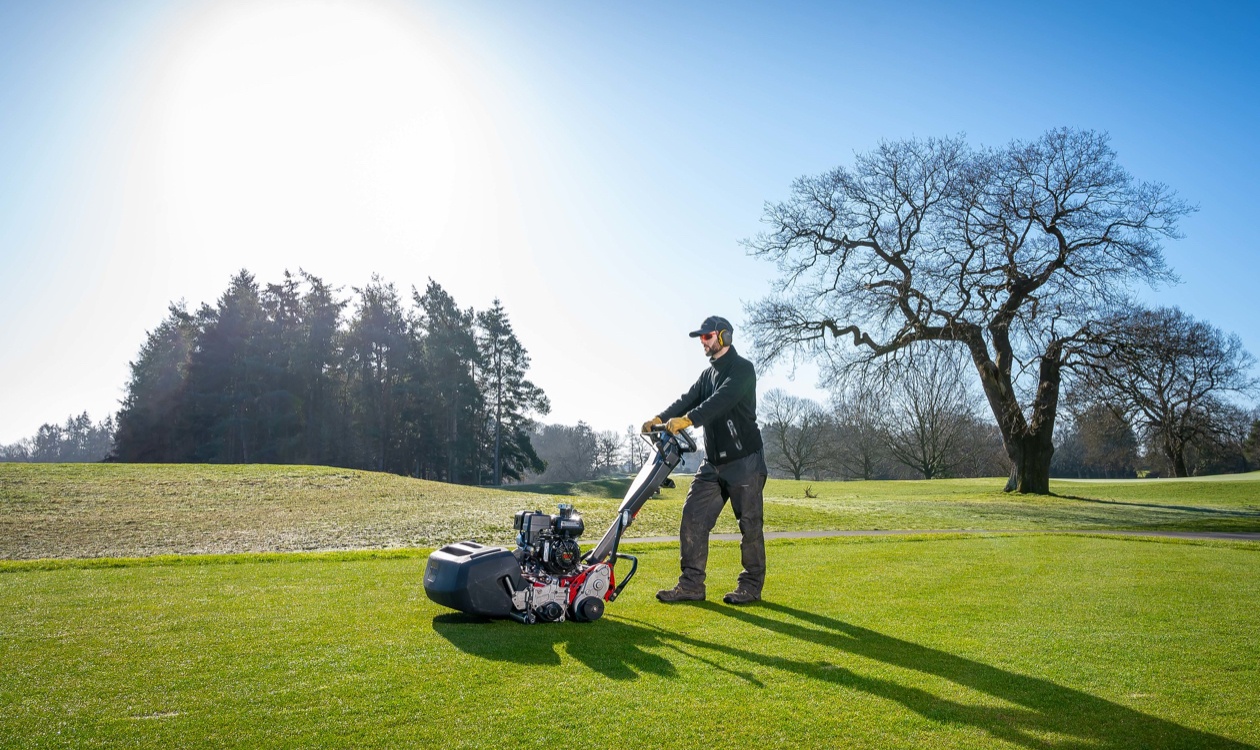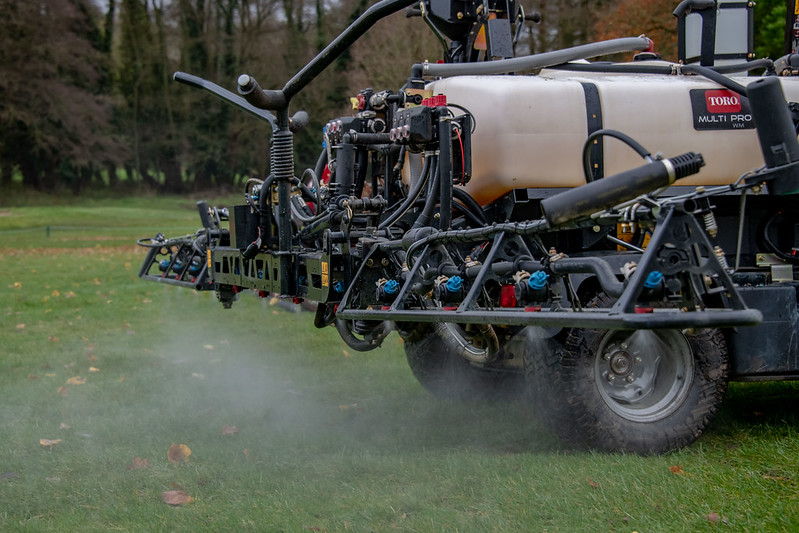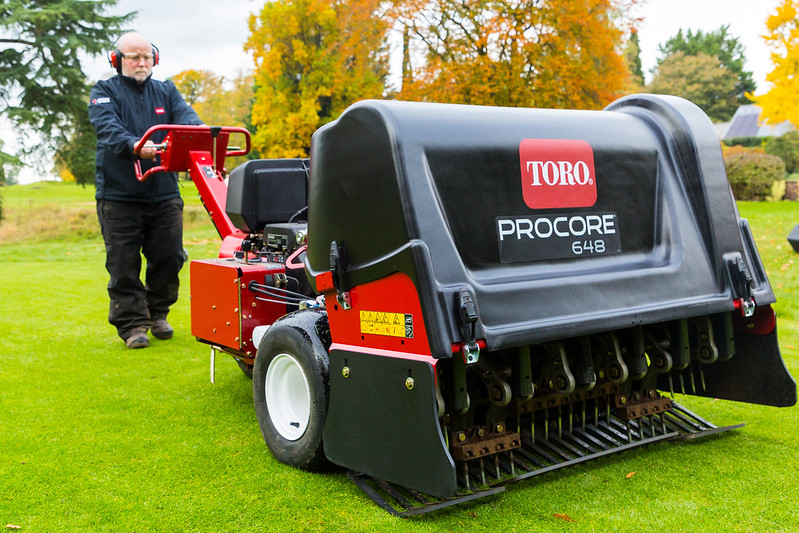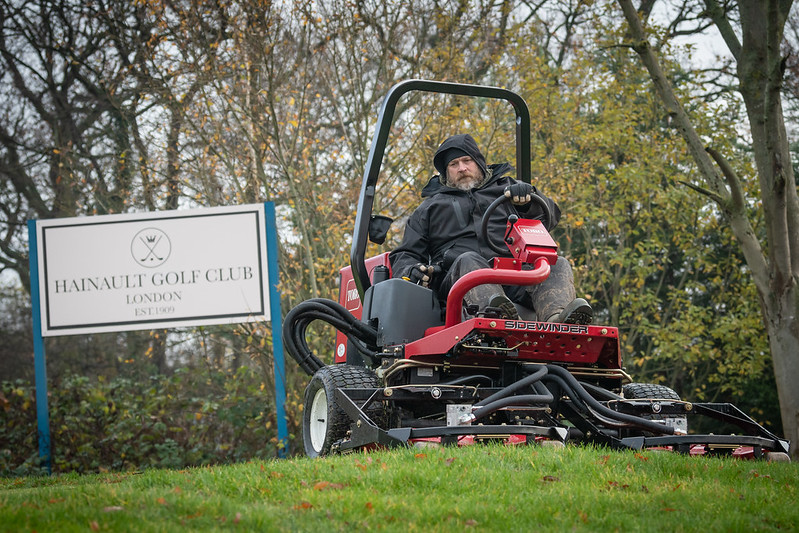Winter maintenance made easy
As winter approaches, golf course managers and greenkeepers must adapt their maintenance strategies to protect turf from cold temperatures and wet, unpredictable weather.

While our recent articles shared practical maintenance advice to kickstart your spring, summer and autumn golf season, this winter turfcare guide will help you ensure high-quality playing surfaces despite the challenges of the cold weather.
Here are six tips for proactive turf management to keep golf course turf healthy throughout winter and prepare it for a strong start in spring.
1. Prepare for the winter weather
Turf surfaces should be significantly altered only if growing conditions are favourable: when the turf is stressed by maintenance activities, it needs time and growth to recover.
Naturally, this limits the extent of remedial work that can be done during winter, when growth slows notably. To ensure the best results, damage should be minimised during low-growth periods, reducing potential stress factors.
For instance, raising the height of cut during winter provides a buffer against frost and offers the grass more leaf area for photosynthesis, which is vital when daylight is limited. At the same time, mowing frequency should be reduced to match growth rates and avoid unnecessary wear from over-maintenance.
Optimising greens maintenance
Using lightweight pedestrian mowers like the Toro Greensmaster 1026 range can be another great strategy to mitigate soil compaction and turf stress, especially when machine blades are kept sharp to deliver impeccable, clean cuts.

Alternatively, rolling the greens to reduce mowing frequency while preserving the course’s playability can be an effective method to support turf health. In particular, the Toro GreensPro 1260 roller provides outstanding results with minimal stress thanks to a long-lasting smoothing effect that significantly improves the quality of play while minimising rolling frequency.
Talking about the impact of this machine, Karl Williams, Course Manager at Worcester Golf and Country Club, was enthusiastic: “I can cut the greens at a higher height of cut, which is healthier for the grass plant and also still achieves the greens’ speed the golfers require.”
2. Inspect the course regularly, fertilising as needed
Routine course inspections are essential to spot emerging issues during the winter months, as cold, wet weather can quickly lead to surface damage, debris build-up and frozen ground conditions.
When the temperature is expected to drop below zero, try to insulate turf roots in the most vulnerable areas of your course to help the soil retain warmth and reduce frost damage. This will encourage microbial activity in the root zone and support overall turf resilience during periods of low growth. Limiting machinery or foot traffic on frozen turf can also help prevent compaction and mitigate the risk of structural weakening of the sward.
Pay close attention to turf health, watching for signs of pests, disease or nutrient deficiencies. Winter is a vulnerable time for turfgrass, especially in shaded or poorly drained areas where fungal diseases like fusarium are more likely to spread. By detecting warning signs early, you will be able to simplify and speed up the remediation process.
Unmatched spraying accuracy
Fertilising with mixes designed for winter, rich in nitrogen and iron, will also help you support steady turf recovery, maintain a green colour and promote grass resilience. For precise fertiliser application, the Toro Multi Pro 5800-G sprayers are the most advanced system on the market: nearly every aspect of this spray system has been fine-tuned to maximise precision.

Built for aggressive agitation and faster response times to apply desired spray rates consistently, the Multi Pro 5800-G is also guided by Toro’s GeoLink technology to ensure unrivalled accuracy with real-time autonomous adjustments.
3. Improve drainage to prevent waterlogging
During a typical UK winter, heavy rainfall can flood greens, tees and fairways, disrupting play and increasing the risk of turf diseases.
The first step to prevention is to inspect and maintain existing drainage systems to ensure they are free of blockages. Regular deep-tine aeration can significantly enhance soil structure, allowing excess water to percolate more easily through the root zone and promoting nutrient penetration. Focus especially on high-traffic areas that are prone to soil compaction, as these tend to hold water.
Topdressing greens and tees is another effective strategy to improve surface drainage and reduce thatch build-up, creating a firmer, more playable surface.
Aeration and topdressing excellence
For all turf aeration purposes, Toro remains the gold standard in the industry. The benefits of Toro’s aerators were experienced first-hand by Richard Johnstone, Course Manager at Royal Aberdeen Golf Club, in his previous job: “I was at Nairn Dunbar Golf Club for eight years as Course Manager prior to arriving in Aberdeen, where we’d had a ProCore 648 since 2013. It was nimble, manoeuvrable, effective and easy to use. When you’ve had an experience like that with a piece of machinery, you don’t tend to look any further.
That’s why Richard convinced his team at Royal Aberdeen Golf Club to choose Toro for aeration as well. “The new ProCore 648 is fast and neat whatever kind of aeration it is doing,” he explained. “We do a variety of solid, pencil and hollow tine in the main and whichever you’re doing you can use it all day without feeling it. The vibrations are negligible.”

But Toro’s excellence is not limited to aeration. The ProPass 200, for instance, are broadcast-style topdressers that offer unmatched versatility and precision. Colour-coded adjustment settings make this machine extremely easy to use to obtain accurate spread patterns, from ultra-light dustings to ultra-heavy aeration hole filling applications. Moreover, the four-wheel, walking-beam suspension ensures a light footprint that is ideal to minimise turf stress in a low-growth season.
4. Focus on pest and disease management
Unfortunately, pests and diseases don’t take a break in winter. Identifying and managing threats such as leatherjackets, chafer grubs and snow mould is crucial to maintaining a healthy lawn and golf course during the colder months.
Conduct regular checks for signs of infestation or fungal growth: look for discolouration, thinning turf or unusual surface activity. Early detection allows for quicker intervention and minimises long-term damage.
In this context, proactively maintaining soil health is your best defence. Apply a balanced topdressing mix to support soil biology and keep thatch levels under control with aeration to increase the turf’s natural resistance to pests and disease-inducing organisms.
Consistent pest and disease management throughout the winter is key to preventing costly interventions later on. If prevention fails, however, try to opt for environmentally conscious control methods wherever possible. This could include encouraging beneficial insect populations that prey on pests or using organic pesticides approved for the UK. You can find more practical tips in our complete guide to managing leatherjackets.
5. Set time aside for equipment maintenance
With its slower pace and frequent breaks, winter provides an ideal opportunity to perform preventative maintenance on turfcare equipment whenever machines are not used.
Peter Todd, Estate Manager of Royal Norwich Golf Club, reminds us that machinery maintenance should be a constant effort over time to be truly effective: “There is a tendency to push the majority of machinery maintenance into the off season when there are fewer jobs to do around the course and cutting frequency has decreased, and while it does provide the time to do the machine’s ‘MOT’ if you like and a full service and deep clean, you’ll never regret paying attention to your machinery and parts maintenance throughout the year.”
Maintenance should ideally follow the manufacturer’s manual to ensure machines run at their best. Some of the most common practices include:
- Changing the oil to prevent sludge and corrosion
- Draining fuel tanks to avoid ethanol damage
- Deep cleaning all machines to eliminate dirt and rust-causing debris
- Cleaning and replacing air filters
- Keeping batteries charged with a float-type charger
- Sharpening cutting units, especially in wet winter conditions
- Fitting new tyres for better traction
- Stocking up on essential replacement parts to avoid costly downtime and keep machines ready for action
The advantage of genuine Toro parts
And when it comes to Toro machines, the best way to extend equipment longevity and productivity while minimising downtime and the Total Cost of Ownership (TCO) is using genuine Toro parts whenever a replacement is needed.
Explaining what makes these parts so special, Michael Hampton, Parts Manager at Reesink Turfcare, says: “It’s the quality of the design and the unparalleled attention to detail that make the difference for Toro machinery. It’s the same with Toro parts. They’ve all been tested and retested to make sure they can withstand the daily stress that keeping the course in top condition demands, even in the cold, snowy, frosty, damp or hard conditions of winter.”
For more practical advice, feel free to explore our in-depth guide to hassle-free winter maintenance.
6. Protect your maintenance team
After taking care of your machines and ensuring they are in optimal condition to tackle the challenges of the new year, it’s important to protect your most valuable asset – your people.

Ensure the safety of your maintenance staff by providing warm, waterproof clothing and essential protective gear to shield them from winter’s harsh conditions. Exposure to cold and damp environments can quickly lead to health issues and decreased morale, so keeping staff warm and comfortable is vital.
Designate certain days for indoor maintenance projects or equipment servicing to reduce prolonged outdoor exposure. You can also encourage regular breaks in heated facilities and provide hot beverages to help maintain healthy energy levels and body temperature.
Taking turfcare to the next level
Achieving top-tier turf quality starts with using the best tools for the job – and Toro continues to lead the way in turfcare innovation.
From advanced irrigation systems to high-performance machinery, Toro’s solutions are designed to deliver exceptional results with maximum efficiency and reliability, helping you meet the ever-evolving demands of golf course maintenance.
As the exclusive UK distributor of Toro turfcare machines, Reesink is your trusted partner in selecting the right equipment for your course. For tailored advice and support, call 01480 226800, email info@reesinkturfcare.co.uk or visit reesinkturfcare.co.uk.